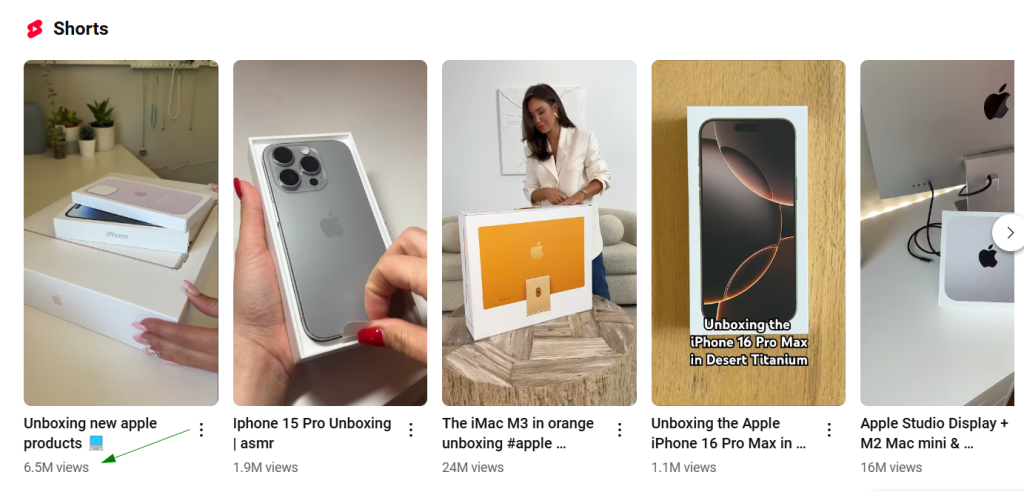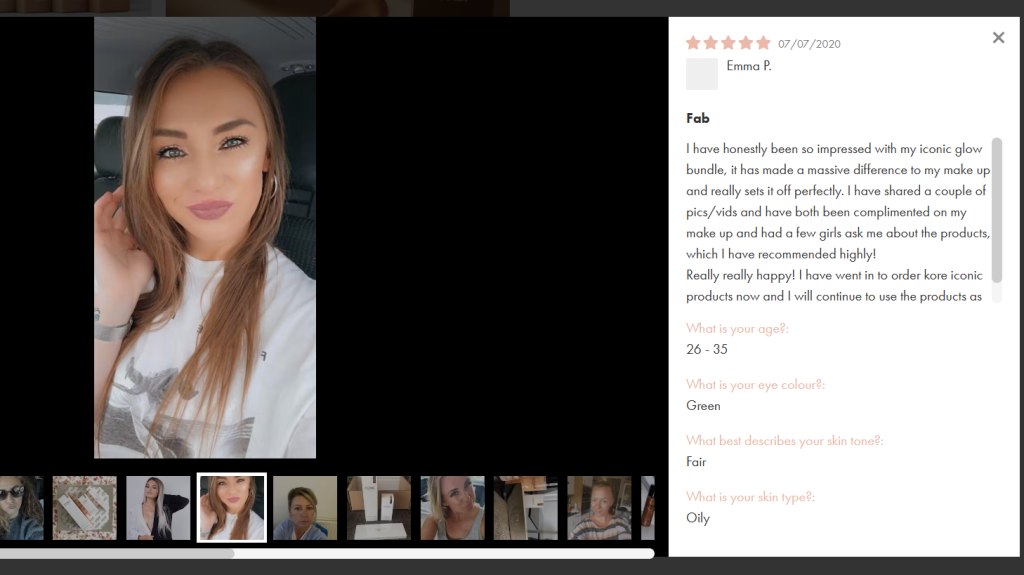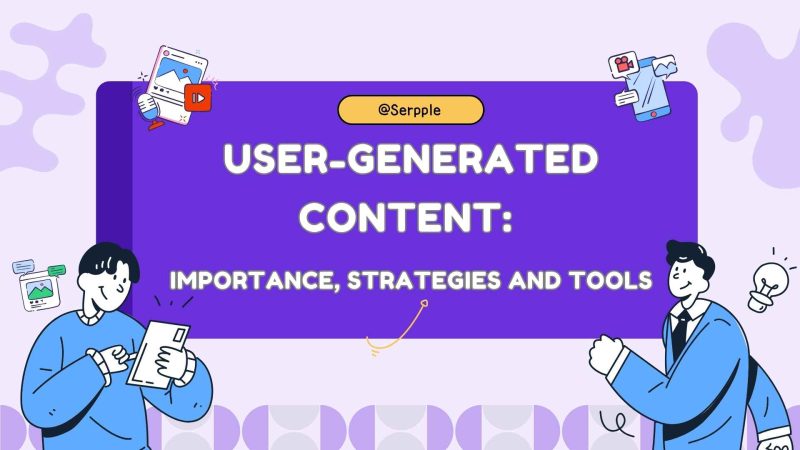Remember that Coca-Cola advertising campaign held in 2011, Do You?
The one in that company swaps their logo with people’s names?
Oh yes, the ‘Share a Coke’ initiative. A basic concept that turned into the world’s phenomenon.
By putting names to the bottles, Coca-Cola made their product personal and shareable.
The results were astounding: It got them a 2% sales boost, which is great for the beverage super competitive industry, over half a million photographs posted to social media, and 25 million more fans on Facebook.
This strategy turned out to be the most effective for Coca-Cola because it helps them to build better connections and make their customers do the talking.
That’s the power of user-generated content. When your consumers market your products for you is what we call user-generated content (UGC). It’s a proven strategy that builds trust, increases engagement, and drives growth. Studies show 93% of marketers find UGC more trustworthy than traditional advertising and it can increase conversions by 29%.
But why is it so effective? Simple: people trust people. The ability for people to see real life stories, honest opinions and experience of others like them, creates the credibility that no other form of advertising can do.
In this article, you’re going to find everything you need to know about UGC. We’ll cover:
- Why UGC is essential
- Types of UGC and where to use it
- Real-life success stories
- Step-by-step strategies to build your own UGC campaign
Whether you’re just starting out or looking to level up your marketing game. This guide will give you the tools to embrace UGC and help you make your customers to be your most powerful advocates.
Let’s dive in.
Why is UGC Important for a Brand’s Growth?
In today’s world, trust is the currency of modern marketing and 86% of consumers prefer to trust a brand when it shares user generated content (UGC) vs. traditional ads.
Why? This is because nothing beats seeing real people, sharing real experiences and opinions. UGC gives legitimacy that polished marketing can’t beat. This drives new users in with a ripple effect of trust.
Trust and Authenticity Psychology
When customers see others engaging with a brand — either through reviews, photos or videos — it validates the quality of the product. This social proof builds confidence that drives them to buy.
Impact on Decision-Making
Based on the Stackla Survey, 79% of people agree that UGC plays a key role in their buying decisions. As a consumer you have seen that customer reviews and photos are more than the key to making an informed decision — they are a reassurance. If you’re navigating on a new brand’s website that doesn’t have any product reviews, regardless of how good their product, marketing strategy and copywriting is, you will hesitate to buy from them. Because as a consumer you know, brands will write only good about their products but to know the actual quality it feels satisfactory when you see it through someone else’s lens. That’s exactly how user generated reviews help to push buyers from hesitation to checkout.
Amplifying Reach Beyond Massive Budgets
UGC is a viral marketing machine that works wonderfully with a minimum budget. Take GoPro, for example. They didn’t just sell cameras—they built a movement. By encouraging users to share thrilling #GoPro moments, they collected over 50 million Instagram posts and turned their YouTube channel into a gold mine of epic adventures with millions of subscribers.
They started this community driven approach in 2018 which didn’t only skyrocket their brand visibility but also helped them generate $1 billion in annual revenue in 2023 with very less Ad spend. GoPro proved that empowering your audience to tell your story is super smart.
Millennials and GenZ Love UCG
Here’s a fun fact: Over 40 percent of the workforce is made up of Millennials and Gen Z, and they have the highest buying power. Even more impressive? These generations are UGC supporters. 71% of millennials consume user-generated content on a daily basis and 70% base their purchasing decisions on producers’ material.
So why does UGC click so well with them? It’s visual. In fact, 55% of consumers, especially younger ones, say they are more likely to trust a picture rather than a written review.
For Gen Z, it’s about feeling included and brands that invite them to be part of the story using UGC develop lasting loyalty. If your brand isn’t leveraging UGC to engage these demographics you’re selling short.
Types of UGC and where to use them
User Generated Content (UGC) is the Swiss Army knife of Marketing — it’s versatile, reliable and always handy. UGC isn’t just a source of stunning visuals but also a possible route to elevate trust, engagement, and conversions.
Types of UGC
1. Photos and Videos
Visuals are the backbone of UGC content which thrive on platforms like Instagram and Youube. This space is dominated by brands like GoPro, who encourage their customers to share their adventurous visuals and videos of bungee jumping, snowboarding, and surfing, captured using GoPro cameras.
Impact: Over 50 million Instagram posts tagged with #GoPro and 10 million YouTube subscribers.
Why it works: This doesn’t only showcase their products but also inspires others to buy the same product by making them feel the need of experiencing the same.
2. Reviews and Testimonials
Stats don’t lie, 88% of consumers trust online reviews as much as a personal recommendation. Reviews whether it’s a product feedback on Amazon quick star rating – helps to increase buyers trust.
Pro Tip: Show user reviews on your website to decrease friction on the new customer’s journey to purchase.
3. Social Media Posts
Hashtags and mentions turn normal users into brand ambassadors. A great example of this is Urban Outfitters’ #UOCommunity, where customers share photos and videos of themselves wearing the brand outfits.
Impact: Content created by real customers helps the brand to build an emotional connection with potential buyers.
Why it works: It is engaging and community driven.
4. Blogs and Unboxings
Tech and lifestyle brands love unboxing videos. Apple is one of the successful brands, which YouTube creator successes go viral simply by opening up the box. Have a look at the views at simple unboxing videos.

Impact: These videos help potential buyers really see the product.
Why it works: It’s real, authentic and provides genuine insights into the product’s features.
Types of UGC and Where to Use It
Not all platforms are created the same, especially when it comes to showcasing User Generated Content (UGC). Some are built for great visuals, others rely on deep conversations and reviews. Now let’s take it one step further and see where your UGC can make an impact.
Instagram & TikTok:
Instagram is your stage if your UGC is eye-catching. User Generated Content outperforms brand only content by 70% more likes and comments across posts on Instagram. Nowadays, Millions of people are inspired by brands to share their experiences for UGC.
Facebook & Twitter
Looking to start meaningful conversations? Facebook and Twitter is the perfect platform to highlight UGC content. The ‘White Cup Contest’ campaign from a popular coffee brand, Starbucks on Facebook is a good example of the community driven campaigns. Starbucks inspired customers to create their own designs on Starbucks cups and to share on social media. As a result, the campaign generated thousands of submissions and built a thriving community of creators.
In contrast, Twitter is ideal for quick interactions and retweeting. Brands like Netflix use it to share fan reactions to new shows, creating real-time buzz. Check out the reposts on the Screenshot below.

Additionally, it also highlights testimonials and hosts Q&A threads with customers. These platforms thrive on building community and fostering authentic dialogue.
Your Website
The most direct impact of UGC on sales comes through your website. A review, testimonial or customer photo added to a product page can significantly increase conversions. Brands like Iconic London go a step further, embedding shoppable customer photos that let buyers see real people using their products.

Incorporating UGC makes your website super trustable for potential customers. Adding simple additions like reviews or Photo gallery provides users with a way to share their experiences and you get a loop of authenticity and engagement. Make your website a golden goose by putting your customer’s reviews on it..
YouTube
YouTube is the king of detailed content. And having 88% of buyers trusting video reviews as much as a personal recommendation, it’s no doubt that unboxing videos and tutorials are the kings here. This is what tech brands like Apple thrive on, with millions of views fueled from user generated content. You can encourage users to upload product unboxing or tutorial videos on their youtube channel. It is the best way to increase your reach to the relevant customers while celebrating your community.
Review Platforms
Sites like Yelp, TripAdvisor, and Google Reviews are UGC goldmines for service-based industries. These review platforms encourage customers to leave detailed reviews with photos, and always respond to feedback—positive or negative. Thoughtful engagement shows you value your audience and strengthens your credibility. The best thing is, you can embed these platform reviews on your website for more credibility.
Reddit & Online Communities
For unfiltered anonymous feedback and honest discussions, Reddit, Quara and niche forums are unbeatable. Subreddits dedicated to your industry are a treasure trove of user opinions and experiences. For brands, these platforms are not best for UGC content, but also engage in conversations, showcase customer stories and gain a deeper understanding of your audience. Authenticity thrives here which makes it an essential space for organic UGC.
How to Build a UGC Strategy
Building a user generated content (UGC) strategy needs focus, structure and knowing your brand inside out. UGC shouldn’t be about simply throwing content into the wind and hoping it flys. UGC is about creating a framework that encourages your audience to share content that supports your goals.
Here’s how you can do it effectively:
1. Define Your Goals
Before you start creating UGC strategy, discover what exactly you’d want to achieve. Are you looking to build awareness, increase engagement, or generate sales? Every goal will make your strategy a bit different. So if your goal is sales, you will need to pay attention to KPIs such as conversions, sales revenue. For engagement, shares, comments and submissions will matter more. Well, whatever your goal is, start with the end in mind and measure progress along the way.
2. Choose the Right Platform
Not all UGC platforms suit every brand. To choose the right platform, think about your product or service and where your audience spends their time. For example, a fashion brand may thrive on Instagram or TikTok, where visuals dominate the views, while a tech company might find more value in YouTube tutorials, Reddit or Linkedin discussions. The key is understanding your audience’s behavior and matching it with the platform that amplifies their voice.
3. Set Up a System of Participation
People are more likely to do something when it’s easy and fun. Make sure in your UGC campaign, you give clear instructions, prompts or themes that make participation straight forward. They allow branded hashtags to collect submissions and make them searchable and provide the hook to encourage users to add their experience in a way that feels authentic to them.
And, one smart way to streamline engagement is through QR codes. Yes! Use Qr code generator online to get them. And, let your users scan a code to access submission forms, upload content, or view campaign guidelines instantly. Now doesn’t this make the process more interactive and effortless?
4. Foster a Sense of Community
UGC thrives on connection. Comment on posts of your audience, reshare their content, or feature them on your brand’s page. If they feel truly seen and valued they will be more likely to contribute again. UGC is a two way conversation, is a collaboration not a collection.
5. Incentivize and Celebrate Contributions
While people love sharing, a little recognition can go a long way. Celebrate your audience’s contributions by featuring them in your campaigns or offering simple rewards like discounts or shoutouts. Incentives don’t have to be extravagant—they just need to feel meaningful.
6. Adapt and Iterate
No UGC strategy is perfect at the beginning. It’s all about analyzing what’s working and what’s not. If engagement is low on one platform, test another. If a particular style of content is gaining traction, encourage more of it. The best strategies evolve based on analysis, feedback and results.
A well-executed UGC strategy should be about building relationships. Nothing can go wrong with this. By focusing on your audience, choosing the right platforms, and creating a collaborative space, you’ll turn your customers into your most vocal advocates. The magic happens when they feel like they’re part of your brand.
Importance of UGC for Advertising and SEO
User Generated Content (UGC) can be your secret weapon for both advertising and SEO. It’s real, authentic, and produces results that overly advertised brand content struggles to match.
In this post, we’ll unpack how UGC can help transform your marketing efforts.
A. Advertising Benefits
UGC takes Ad results to an entirely new level. Because user-generated content ads get 4x higher click through rates and cost per click, in some cases cost per click can be 50% lower. Why? Because people trust people. Real customers or relatable experiences in your ads can create that emotional connection that stock photos and scripted videos can’t.
B. SEO Impact
UGC can also be useful for boosting conversions through SEO. Customer reviews, for instance, often include long-tail keywords naturally. These are the phrases people actually search for, like “best waterproof hiking boots for winter” instead of generic terms like “hiking boots.”

Plus, user-generated photos, videos, and comments keep your content dynamic, which search engines prioritize. Want to take it up a notch? Use tools like Serpple to monitor your SEO performance and see how UGC contributes to your rankings. Whether it’s tracking keyword growth or identifying new opportunities, platforms like Serpple help you stay ahead of the game.
Tools and Technologies to Streamline UGC
Managing user generated content feels like an uphill battle? With the following tools and technologies you can handle it with ease.
1. Social Listening Tools
Have you ever wanted to find out what people are saying about your brand? You can use Sprout Social and Hootsuite for tracking real time mentions, hashtags and trends. These tools will help you to spot UGC opportunities and to connect with your audience where they are.
2. Content Moderation Platforms
UGC is gold but it needs refinement to shine. Platforms like Cloudinary can help you do that. It helps you organize and secure assets while maintaining consistency. Whether it’s filtering out inappropriate content or optimizing images and videos for your campaigns, these tools ensure your UGC is polished and ready to shine.
3. Campaign Management Tools
From planning to execution, tools like Emplifi are your UGC command center. They simplify campaign creation, track performance, and keep everything on schedule.
Conclusion
User generated content (UGC) is much more than a marketing tactic – it’s a trust builder, engagement booster and a great way to grow your audience. When you feature authentic stories with real people you build authenticity that feels so much more real than traditional ads.
Start small. Test ideas. Focus on what’s genuine for your brand and for your audience. UGC marketing doesn’t have to be best, it just has to be real.
Ready to turn customers into your biggest advocates? Embrace UGC today and watch your audience grow organically, one authentic story at a time.
Published by
Adam White
Adam White is a 20+ year SEO professional who has optimized over 400 websites, built and sold over 20 internet and SaaS businesses all with SEO as the main traffic source. Follow him on Twitter/X
All stories by Adam White


